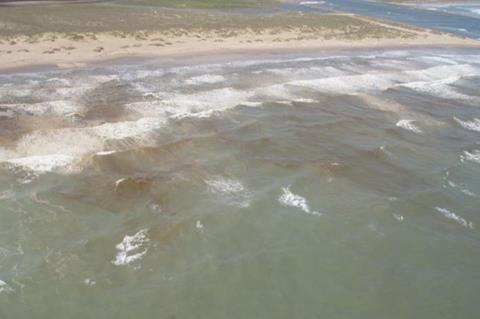The University of Maryland Center for Environmental Science (UMCES) has been awarded a $7.5 million grant from the National Oceanographic and Atmospheric Administration (NOAA) to come up with innovative ways to control harmful algal blooms.
UMCES’ Institute of Marine and Environmental Technology (IMET) in Baltimore, Maryland, will partner with the Mote Marine Laboratory & Aquarium’s Red Tide Mitigation & Technology Development Initiative in Sarasota, Florida, to set up an innovative US Harmful Algal Bloom Control Technology Incubator (US HAB-CTI) that will solicit, fund, and assist the development of innovative harmful algal bloom control technology projects with commercial potential.

“Overall, harmful algal blooms frequency has been increasing a tremendous amount over the past five years due to climate change, increasing temperatures, and legacy nutrients,” said Professor Al Place of the University of Maryland Center for Environmental Science.
Harmful algal blooms, such as red tides, cause a wide variety of environmental, economic, and human health problems. They occur when algae grow out of control while producing toxic or harmful effects on people, fish, shellfish, marine mammals, and birds.
The growing frequency and magnitude of harmful algal blooms has created a pressing need for ways to control these blooms in coastal waters. As scientists, governments, and agencies have worked to assess approaches, there has been increasing need to incorporate environmental compliance, risk assessments, and other permitting in the decision-making process to use a control agent or approach.
The US Harmful Algal Bloom Control Technologies Incubator is a unique partnership between UMCES’ Institute of Marine and Environmental Technology and Mote’s Red Tide Mitigation & Technology Development Initiative to solicit, fund, and assist innovative control technology projects and provide guidance on navigating the relevant licensing and permitting processes through an online clearinghouse of proven control methods.
IMET and Mote will make available to grantees their research infrastructure to test mitigation compounds, technologies, and deployment mechanisms for marine, estuarine, and freshwater HAB species that negatively impact the US economy, environment, and quality of life.
“Field demonstration of harmful algal bloom control techniques is needed to fill the gap between laboratory research and larger scale implementation,” said University of Maryland Center for Environmental Science President Peter Goodwin. “This is an ideal partnership to address a concerning global issue.”
IMET has the capability to perform lab-based experiments with freshwater toxic HABs in freshwater, and Mote has extensive experience with Florida red tide in the Gulf of Mexico, including their lab-based testing of mitigation strategies at their inland Mote Aquaculture Research Park and their facilitation of pilot field tests during past active red tide blooms.
“We know first-hand how devastating HABs can be,” said Mote President Dr Michael P Crosby.
“NOAA recognized the important role that our innovative collaboration will have in effectively and efficiently bringing together many diverse partners from industry, academia and non-profit organizations with a laser focus on utilizing past research and existing knowledge to develop new technologies and approaches for mitigating the impacts of HABs to the environment, economy, and quality of life in communities across the U.S.”
Annual solicitations will be announced on the US HAB-CTI and NOAA websites and through national harmful bloom networks beginning in Spring 2023. A rigorous evaluation and advisement process will assess innovative proof-of-concept project feasibility to prepare for future National Oceanic and Atmospheric Administration, National Centers for Coastal Ocean Science: Prevention, Control, and Mitigation of Harmful Algal Bloom (PCMHAB) competitive funding announcements.
In addition to the core proposal process steps, guidance will be provided to researchers and potential end users about the licensing, permitting, and other environmental compliance, organised into more user-friendly online clearing house covering both federal and state requirements.
“In Florida, we’ve demonstrated that partnerships between research institutions, government agencies, private businesses, and other stakeholders can result in effective research that can rapidly identify potential, scalable solutions,” said Kevin Claridge, Mote Vice President for Sponsored Research and Coastal Policy Programs. “We’re looking forward to the opportunity to expand that model even further with a national focus that includes many types of HABs.”
Topics
- Algae
- algal blooms
- Aquatic Microbiology
- Dr Michael P Crosby
- florida
- HAB
- Innovation News
- Institute of Marine and Environmental Technology
- Marine Science
- Maryland Center for Environmental Science
- Mote Marine Laboratory & Aquarium
- National Oceanographic and Atmospheric Administration
- Peter Goodwin
- Professor Al Place
- red tide
- Red Tide Mitigation & Technology Development Initiative
- University of Maryland Center for Environmental Science
- US Harmful Algal Bloom Control Technology Incubator
- USA & Canada







No comments yet